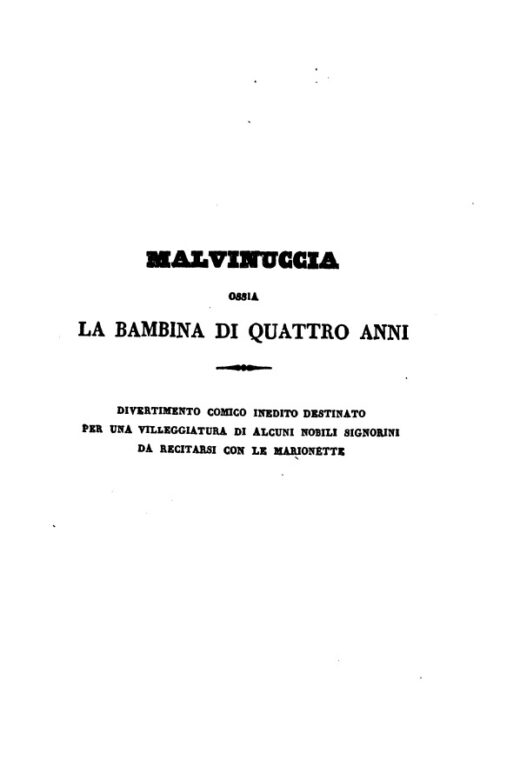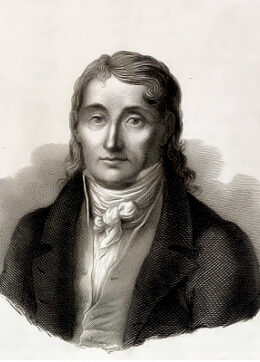
Printed
29 pages
Author(s)
Malvinuccia ossia La bambina di quattro anni
In Malvinuccia ossia La bambina di quattro anni (Malvinuccia, or the four-year-old girl), Giovanni Giraud shows different “masks” from the Commedia dell’arte: the Neapolitan Pulcinella, Cassandrino (created by Filippo Teoli, and also sometimes called Cassandro in this play), and Rugantino, an arrogant and comic Roman character created by the puppeteer Ghetanaccio. In this text, Rugantino does not speak the Roman dialect, which he usually does; instead, he speaks Italian. Pulcinella also does not quite speak Neapolita: as the editor explains, this would have made the reading and the performance more difficult to understand.
A man falls victim to a fraud about marrying a girl
Pulcinella and Rosetta are husband and wife; they quarrel about love and money. Rosetta then meets a man of a certain age, Cassandrino; he tries to seduce her while she thinks he only wants to take her on for a sewing job. Cassandrino mistakes Pulcinella for Rosetta’s father and asks him if he can marry her. Pulcinella plays along with the situation and makes a fool of him by always talking about his daughter Malvinuccia, who is four years old, instead of Rosetta; indeed, Cassandrino does not know the name of the woman to whom he just spoke. Pulcinella settles on a very high price for the sewing job and agrees to let Cassandrino marry his daughter in return. Pulcinella is thrilled at having duped the old man and relates the story to his brother-in-law Rugantino. The latter takes the matter into his own hands: he asks Cassandrino to make a written commitment and begins to negotiate with him. Cassandrino wants to know how long all of this will take, because he is in a hurry and wants to atone for a failed marriage at the end of which his future wife left with a friend. After making repeated threats, Rugantino manages to turn down all his demands; he even gets money to buy a drink. Rugantino calls Pulcinella, who is sleeping, and tells him that the agreement is ready. However, Cassandro wants to see his fiancée Malvinuccia.
Pulcinella then calls the children and the young Malvinuccia greets Cassandro merrily, as though he were her grandfather. The man says that there has been a misunderstanding and that he wants Rosetta. Thus, they go fetch her while she is nursing another child. She arrives and the misunderstanding is cleared: she is already Pulcinella’s wife. Rugantino still demands that the contract be honoured. They therefore decide that Cassandro will pay for dinner and wine for everyone, and the latter asks that they all go to Zagarolo (a village near Rome) to relate all that has happened and turn it into a theatre play.
First performance
Publications and translations
Giraud, Giovanni. Opere edite ed inedite del conte Giovanni Giraud, Tomo Nono. Roma : Alessandro Monaldi, 1841
